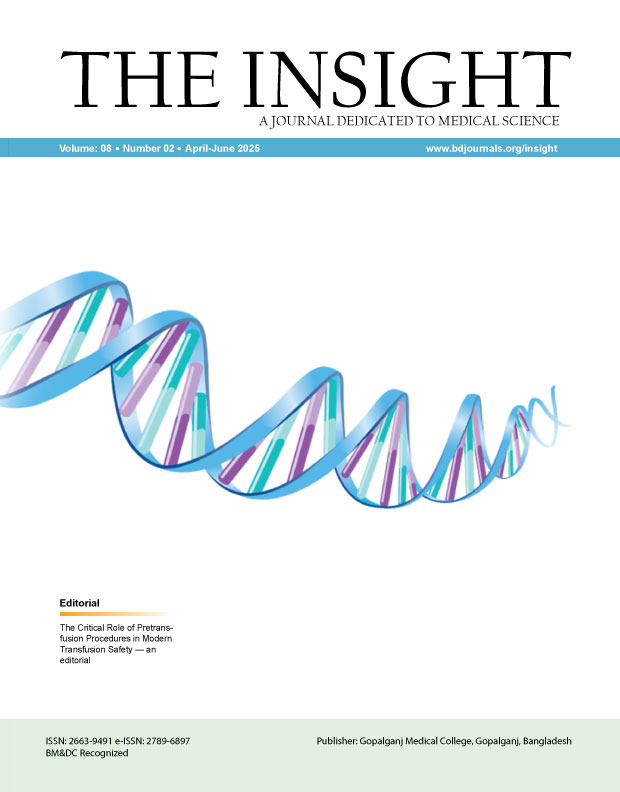Abstract
Background: Vitamin D plays a crucial role in bone mineralization, immune function, and overall growth. Deficiency is a widespread public health concern, particularly among children in South Asia, including Bangladesh. Limited sun exposure and dietary insufficiency are recognized contributors, but the prevalence and associated risk factors remain underreported in pediatric outpatient populations. Aim of the study: To determine the prevalence, risk factors, and clinical impact of vitamin D deficiency among children attending outpatient departments of Bangladesh Shishu Hospital & Institute. Methods & Martials: A cross-sectional study was conducted from From January 2024 to December 2024 on 210 pediatric patients (<18 years) using purposive sampling. Demographic, clinical, and lifestyle data were collected via structured questionnaires. Serum 25-hydroxyvitamin D [25(OH)D] was measured using chemiluminescent immunoassay and classified as deficient (<20 ng/mL), insufficient (20–29 ng/mL), or sufficient (≥30 ng/mL). Associations with age, sex, BMI, sunlight exposure, and season were analyzed using chi-square tests and multivariable logistic regression. Result: Vitamin D deficiency was observed in 59.5% of participants, and 26.2% had insufficient levels. Deficiency was most prevalent during winter and spring and was significantly associated with limited sunlight exposure (<2 hours/day). Age, sex, and BMI were not independent predictors of deficiency. Conclusion: Vitamin D deficiency is highly prevalent among children attending outpatient departments in Dhaka. Environmental and lifestyle factors, particularly inadequate sunlight exposure and seasonal variation, are key contributors. Routine screening, safe sun exposure, and dietary or supplemental interventions are recommended to prevent adverse musculoskeletal and immune outcomes.

This work is licensed under a Creative Commons Attribution 4.0 International License.
Copyright (c) 2025 The Insight





 PDF
PDF